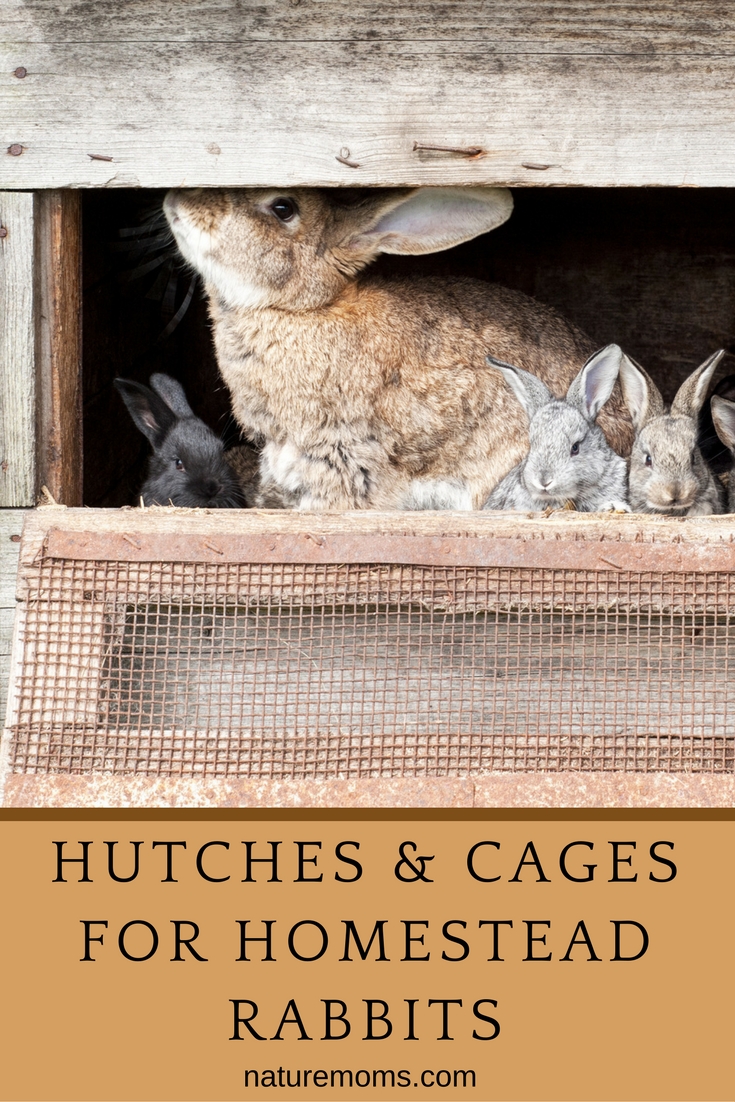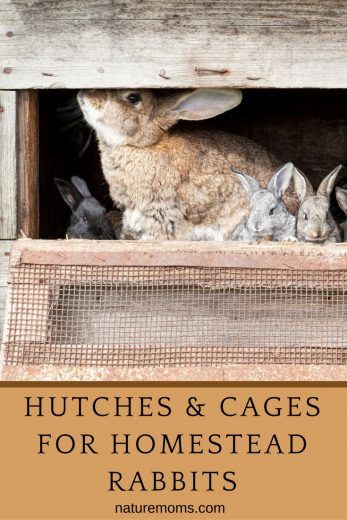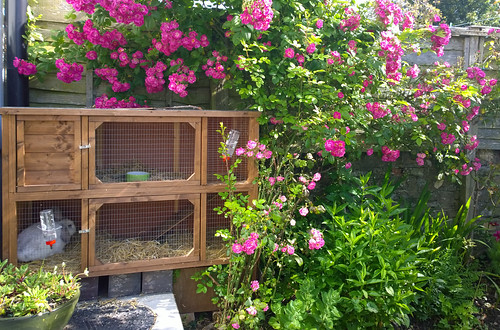 So you’ve decided to bring home a few rabbits and add them to your homestead. By now you should have decided how you will house them…cage or colony. There are advantages and disadvantages for each but if you are now reading this article you have perhaps decided on cages. Their cage or hutch will be the place for your rabbit’s food, water, and sleep. If it’s outdoors, it will also provide protection from harmful weather and from predators that would like to harm them.
So you’ve decided to bring home a few rabbits and add them to your homestead. By now you should have decided how you will house them…cage or colony. There are advantages and disadvantages for each but if you are now reading this article you have perhaps decided on cages. Their cage or hutch will be the place for your rabbit’s food, water, and sleep. If it’s outdoors, it will also provide protection from harmful weather and from predators that would like to harm them.
How big of a cage or hutch should you buy? This depends on how big the rabbit is and how much space you can accommodate. Typically, it should be at least four times the length of the rabbit to estimate the minimum size of the hutch. It should also be high enough so the rabbit can stand on its hind legs if it chooses. I believe in giving them sufficient room to live and play.
The door should be wide enough to accommodate the rabbit, and so you can be able to put food, water, accessories and any other necessities inside easily. It should also be wide enough for you to reach in and remove the rabbits easily when needed.
There are various types of styles and models for hutches. Many people opt to buy a chicken coop and use it for rabbits. Others just cover metal cages with a metal roof and plastic tarp for sides. There are also ready made rabbit clutches made of wood you can buy. It all depends on the size of the hutch and whether you want an indoor or outdoor unit. They can be made from bamboo, wood, metal and plastic.
Solid floors feel nicer to your rabbit’s feet, but it is also more difficult to clean. To accommodate both types, you can have a wire floor with a solid mat in placed inside somewhere so your rabbit has a place to rest. You can used cardboard for mats but they will eventually chew them up and they will need to be replaced. The other type of hutches would be a bamboo or wooden floor which has spaces about every other inch for waste removal. The waste removal part is very important to consider because it is unhealthy for rabbits to live constantly in their own waste. Don’t choose a solid metal floor thinking you will clean the cage every day only to decide its too much work later on.
Once you’ve picked the type you’d like, look closely at how they’re made. Even though a certain hutch or cage may be expensive at first, it will last longer in the long run. Make sure all exposed wood is covered with metal. Yes, that means a solid wood hutch needs to be lined inside with hardware cloth because rabbits will chew anything wood they have access too. If you use a metal mesh for the door, it should be attached to the inside of the wooden frame. The roof should be at a slope so the water can run off of them.
Underneath the cages or hutch it is handy to have a tray that catches waste. You can use wood shavings in the trays to absorb urine (and keep smell down). The trays can then be emptied every couple of days into a compost bin. Rabbit poop makes some of the best compost available! You can even sell it on Craigslist if you are so inclined. The tray system also makes it possible to stack cages and not worry about the rabbits on the bottom getting peed on.
If you decide to keep your rabbits outside, they can enjoy the fresh air and its surroundings. However, there are some dangers for being outdoors. Inclimate weather, pests, and predators are of foremost concern. Ensure that you have reinforced your hutch/cage well.
Some hutches have a run that allows the rabbits be able to hop around on the grass but they should still have some sort of shelter from the elements. A separate area in the form of a more sheltered hutch that they can go to especially at night is useful. You may also need to line the bottom with wire so that the rabbits cannot dig out and predators cannot dig in. Door fasteners should be easy to open for you, but for predators or the rabbits themselves.
I suggest starting as minimally as you can and then finding the cage or hutch that works best for you. You can always improve later. Enjoy!




